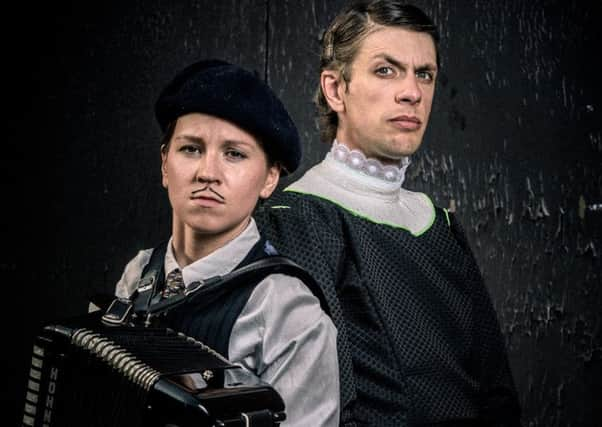Theatre reviews: Valentina's Galaxy | The Element In The Room | Space Ape


Edinburgh Science Festival: Valentina’s Galaxy *** | The Element In The Room **** | Space Ape ****
So the show begins, startlingly, with director Heather Fulton and designer Katy Wilson conjuring up an image of a 1960s kitchen, in which a prettily clad ideal housewife smartly played by Ellie Griffiths begins to disrupt stereotypes by tweaking various pieces of technology out of the fridge and cupboards, and setting up for a moon launch. There’s also another figure present, inspired by the black American astronaut Mae Gemison, a remarkable woman who challenged stereotypes on two fronts; although Joy Maria Onotu’s wordless dance sequences in this role definitely need more explanation, to bring out their full significance.
Advertisement
Hide AdThe flight begins, with a starry sky unfolding above the audience; but then, after thoroughly capturing our imaginations, the show suddenly ends after a bare 35 minutes, without anything resembling a conclusion. It’s a show full of promise, in other words; but it still looks uncompleted, and seems desperately in need of the services of a writer who could craft a fully joined-up story out of this powerful collage of imagery and ideas.
John Hinton’s musical comedy The Element In The Room, by contrast – performed entirely by Hinton himself, with musician Jo Eagle on accordion – is a much more polished and practised introduction to the life of a great female scientist, in this case Marie Curie, the joint discoverer of radium. Already seen on the Edinburgh Fringe three years ago, Hinton’s show takes the high-risk path of celebrating a female scientist by having her played as a man in drag.
Hinton’s song-lyrics are so wittily self-aware about the dangers of appropriation, though, that his show rapidly becomes hard to resist, particularly in the audience-participation sequence when he contrives to explain the whole concept of radiation with the aid of a ball of wool. This is strong stuff, backed by a feisty tale of the widowed Marie’s 1921 visit to America with her daughters, to receive a gift of radium for her research; and as one whose idea of Marie Curie, formed by 1960s schoolbooks, was of a fragile soul who made a great discovery and then died young of radiation-related cancer, I was delighted to learn what I should already have known –that Marie lived well into her 60s, survived her husband by 30 years, won two Nobel Prizes, and was a great, robust female pioneer not only of scientific research, but of its practical application, on the battlefields of the First World War.
As humanity’s late-20th century age of space exploration recedes into history, though, it’s that image of blasting off to the stars that seems to haunt science festival artists this year; it appears not only in Valentina’s Galaxy, and in Tortoise In A Nutshell’s work-in-progress installation The Ornithopter, but also in Space Ape, the latest solo show from master storyteller Andy Cannon.
Slightly surprisingly, given Cannon’s great storytelling track-record, Space Ape seems another slightly hesitant, not-quite-finished show, with too many stories to tell, and a consequent delay in arriving anywhere near its main narrative. There’s the one about the universe in general, and the idea of space flight; there’s the one about wee five-year-old Andy Cannon, back in 1969, watching the moon landing with his Mum and Dad.
And then there’s the future tale of the female scientist Kirsty, of her clever pet chimpanzee Yorick, and of Kirsty’s dangerous expedition to the red planet, Mars. There’s a sense here of a great story in the making, about how humankind will not deserve its possible brilliant future among the stars, if it can’t get its relationship with other species right, here on earth; a story that thrives on powerful work by designer Ali Maclaurin, composer Michael John McCarthy, and film designer Graeme O’Hara, but needs some final editing from Cannon before it can emerge at full power.